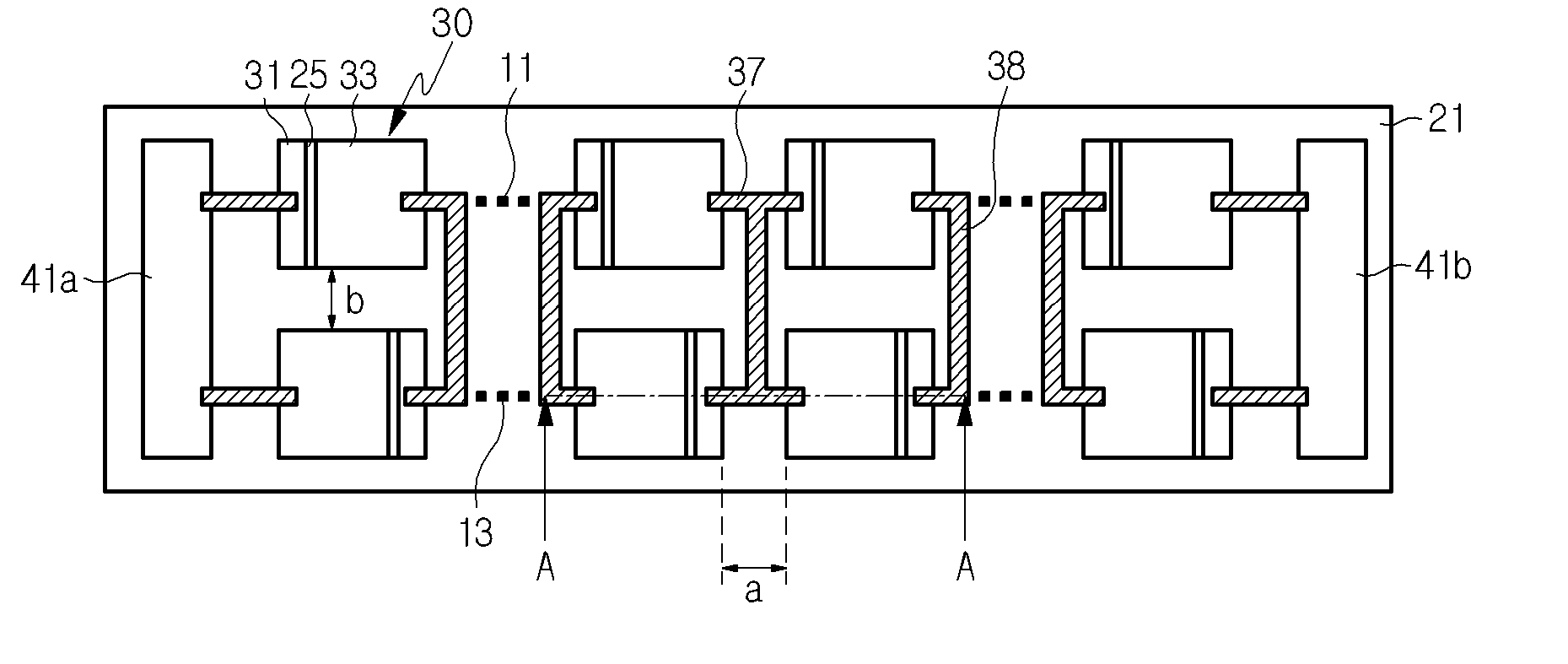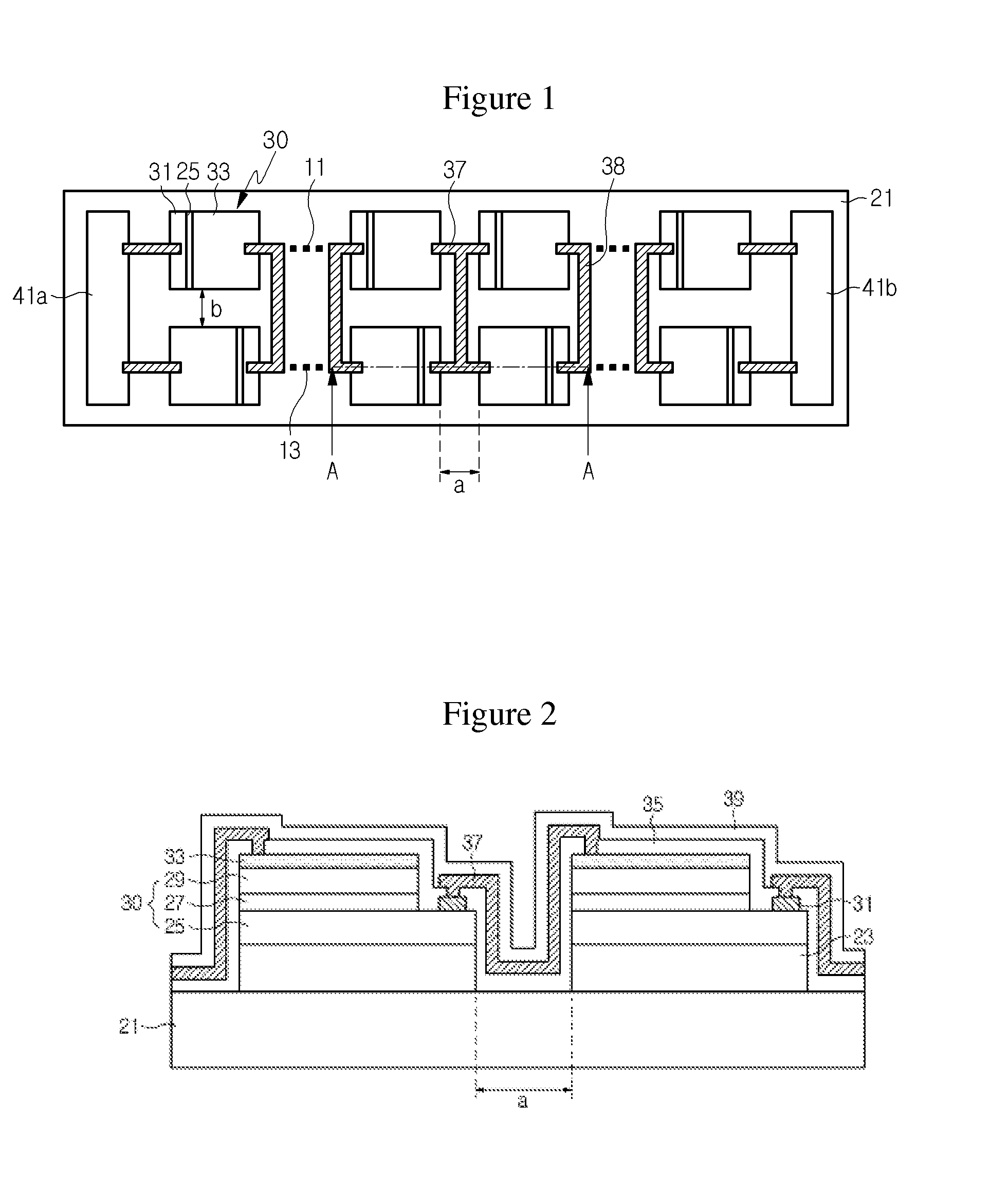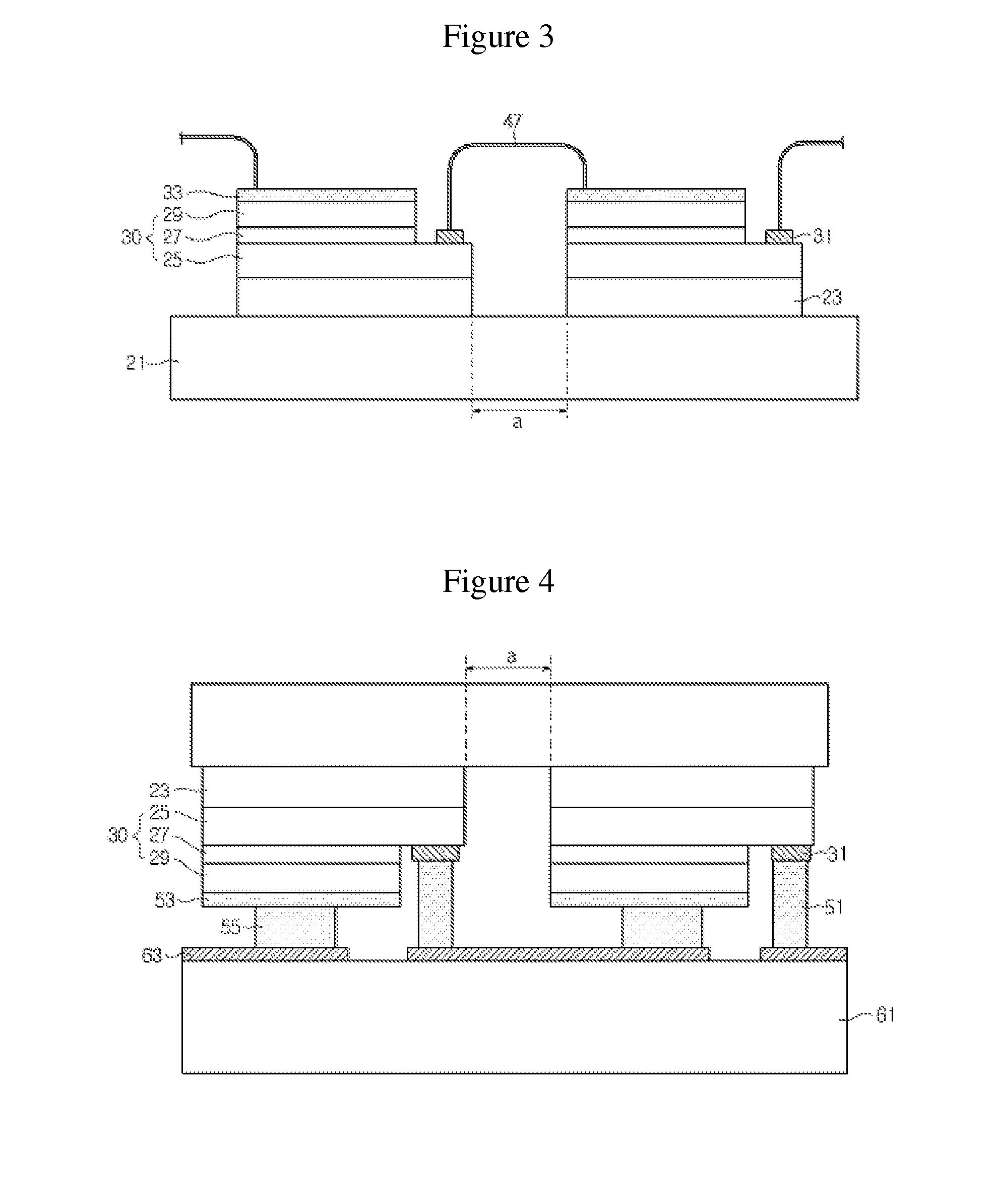Ac light emitting diode
a light-emitting diode and ac technology, applied in the field of light-emitting diodes, can solve the problems of inability to continuously emit light, inability to use the light-emitting diode while connected directly, and easy damage, so as to reduce the flicker phenomenon of the ac light-emitting diode, reduce the turn-on and operating voltage, and increase the light-emitting time of the light-emitting diod
- Summary
- Abstract
- Description
- Claims
- Application Information
AI Technical Summary
Benefits of technology
Problems solved by technology
Method used
Image
Examples
Embodiment Construction
[0026]Hereinafter, preferred embodiments of the present invention will be described in detail with reference to the accompanying drawings. The following embodiments are provided only for illustrative purposes to fully convey the spirit of the present invention to those skilled in the art. Therefore, the present invention is not limited to the following embodiments but may be implemented in other forms. In the drawings, the widths, lengths, thicknesses and the like of elements are exaggerated for convenience of illustration Like reference numerals indicate like elements throughout the specification and drawings.
[0027]FIG. 1 is a plan view illustrating an AC light emitting diode according to an embodiment of the present invention, and FIG. 2 is a sectional view taken along line A-A in FIG. 1.
[0028]Referring to FIGS. 1 and 2, a plurality of light emitting cells 30 are arranged on a substrate 21. The substrate 21 generally has a limited size, e.g. a size of 2000×2000 μm2 or less. The si...
PUM
 Login to View More
Login to View More Abstract
Description
Claims
Application Information
 Login to View More
Login to View More - R&D
- Intellectual Property
- Life Sciences
- Materials
- Tech Scout
- Unparalleled Data Quality
- Higher Quality Content
- 60% Fewer Hallucinations
Browse by: Latest US Patents, China's latest patents, Technical Efficacy Thesaurus, Application Domain, Technology Topic, Popular Technical Reports.
© 2025 PatSnap. All rights reserved.Legal|Privacy policy|Modern Slavery Act Transparency Statement|Sitemap|About US| Contact US: help@patsnap.com



